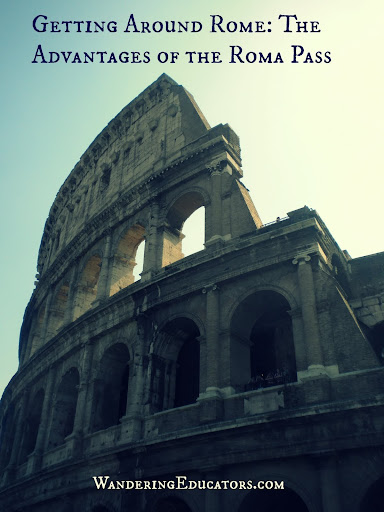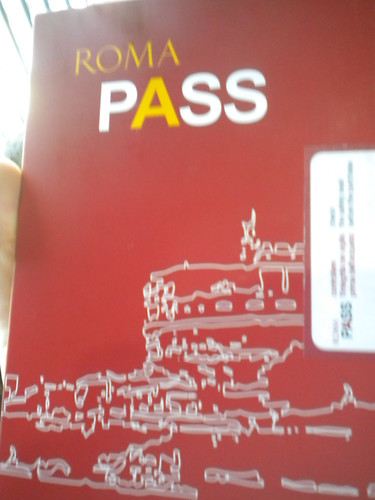The Roma Pass is a tool for touring Rome offered by the Rome City Council, the Ministry for the Arts and Cultural activities, and the public transport company ATAC. It includes helpful tourist information, free public transportation, some free admissions, and some discounted fees. But is it worth the cost and time constraint that come with it?

The Roma Pass is a booklet, which can be purchased for € 34. This booklet includes a map (Roma MAP) featuring helpful information for tourists, a guide to the participating sites (Roma Pass Guide), an activation code to an app (Roma Passè), and a card with instructions on how to access helpful information online (Roma Informa). The Roma Pass card entitles you to free entry to the first two museums and/or archeological sites you choose, including whatever exhibitions may be at the sites. After the first two sites, you will be able to acquire reduced price tickets to all other included sites, as well as to other included events. The exceptions are the following six museums, which are free as long as the pass is valid: Museo della Repubblica Romana e della memoria garibaldina, Museo Bilotti a Villa Borghese, Museo Canonica, Museo delle Mura, Museo Napoleonico, and Villa di Massenzio. The pass also includes free public transportation and lower prices for use of the On-Call Multi-Lingual Medical Service for Tourists. The pass is activated as soon as it is used for admission or public transportation. Once activated, the pass is valid for three consecutive days (including the day it is activated and ending at midnight on the third day). Be aware that you may only use the Roma Pass once for each site.

At what point does the Roma Pass become cost effective? The Colosseum, Palatine Hill, and the Forum have combined admission so they all count as one site. Under the Roma Pass, these are free if they are the first or second place you visit, plus, there is a separate line for Roma Pass users to enter the Colosseum, allowing you to skip the long lines – a lot more convenient than standing in a pack of people in the heat, especially during the summer. Still, a normal Colosseum/Palatine Hill/Forum ticket currently costs €12 and a Biglietto per 3 giorni, or three day public transportation ticket, currently costs €11, bringing the total cost to €23. So if these three major sites are all you plan on visiting, the Roma Pass is not worth it.
But there are dozens of other museums offered, including the following impressive locations: the Musei Capitolini, the oldest public museum in the world; the Galleria Borghese, which requires a reservation and contains the impressive art collection began by Cardinal Scipione, including sculptures by Bernini and paintings by Caravaggio; and the Museo Nazionale di Castel Sant’Angelo, part of the Papal estate where it is now possible to tour from the prison to the Papal apartments. The question is: how many of these locations and services do you plan on taking advantage of within a three day period? Let’s say you go by the itinerary mentioned before, but you also want to take advantage of even two other of the world-renowned locations included, like the Museo di Roma and the Galleria d’Arte Moderna. That will provide you with plenty to do while leaving lots of time for exploration and rest, all at a very reasonable cost. At that point, the Roma Pass starts paying for itself.
For more details check out the Roma Pass website: http://www.romapass.it/
All photos courtesy and copyright Kathryn Blanco
The Roma Pass is a tool for touring Rome. But is it worth it? One traveler takes a look...
Posted by:
Kathryn Blanco
